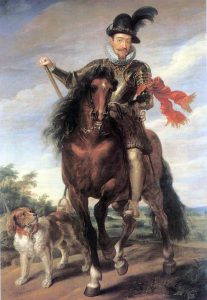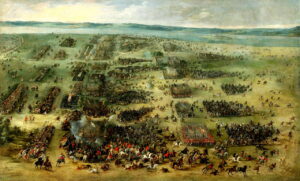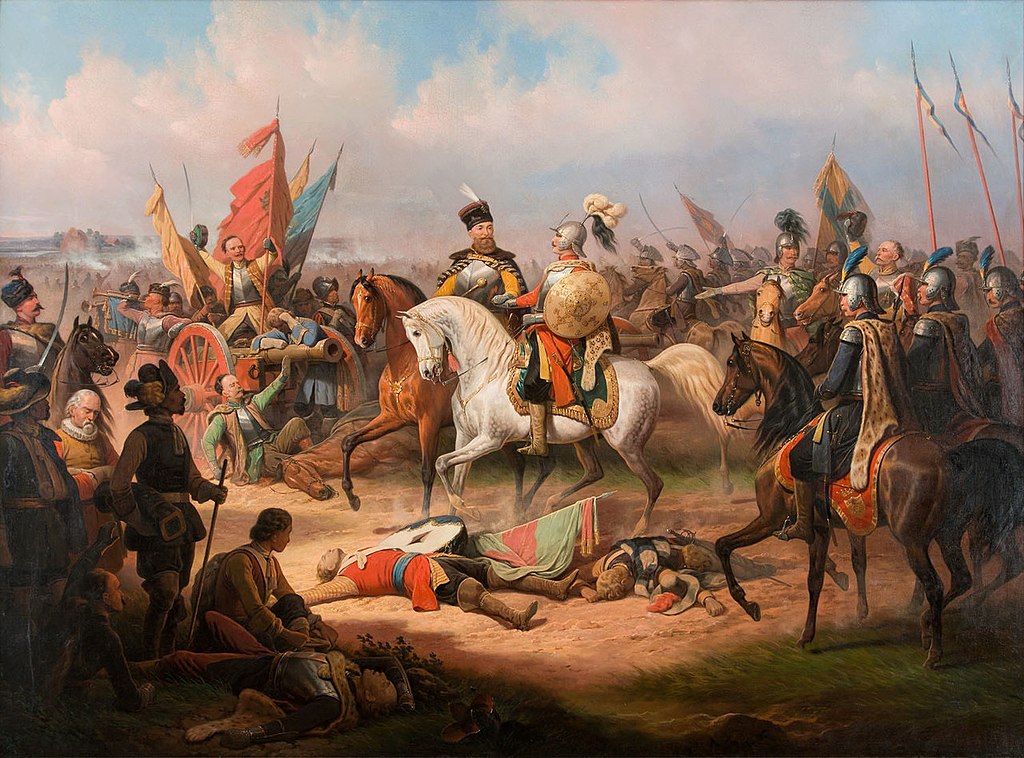The Battle of Kircholm turned out to be one of the most impressive victories of the Polish-Lithuanian army from the Commonwealth. The hussars literally obliterated the three times more numerous enemy with very small losses on their side.
by Piotr Abryszeński
The 17th century turned out to be a century of wars for the Republic of Poland. At the beginning of the century, Sweden turned out to be a particularly formidable opponent, building one of the most modern armies with the goal of taking over Europe. The conflict was caused by competition for dominance in the Baltic Sea region (the dominion of Maris Baltici) and the division of the lands of the former Order of the Knights of the Sword. This was overlapped by the dispute over the Swedish throne in the Vasa family. After his father’s death in 1592, the Polish king, Sigismund III Vasa, became the king of Sweden, thus, formally, the two countries were united by a personal union for several years. However, the magnates in Sweden needed a king in situ, which Sigismund did not want to agree to. As a supporter of the Counter-Reformation, he was also unable to meet their demands to accept the Lutheran faith. In 1599, the Riksdag, i.e. the Swedish parliament, announced the act of dethroning him, and then made Sigismund’s uncle, Charles IX of Suderman, regent.

Confrontation became inevitable when, in March 1600, the Polish king – in accordance with his earlier commitment in pacta conventa – issued an act of Estonia’s incorporation into the Polish-Lithuanian Commonwealth. In response, the Swedes entered the province by force and quickly seized the most important fortresses.
In the first phase of the conflict, the Polish army avoided a decisive battle and focused only on regaining the lost castles. Only Dorpat (now Tartu) and Narva were not captured. The decisive clash took place only in 1605, when the Commonwealth had to fight off another Swedish offensive. At that time, Jan Karol Chodkiewicz, one of the most outstanding commanders of the time, was officially appointed Grand Hetman of Lithuania, and thus took over command of the Livonian front.
Charles IX, who personally commanded the army, wanted to capture Riga – a strategically important port. In order to secure his lines of communication from Polish interference, he decided to use his numerical advantage and defeat the opponent by launching a powerful surprise strike. He assembled an army of 11,000. Chodkiewicz’s army of only 3.6 thousand soldiers stood against it. The two armies met on 27 September 1605 at Kirchholm on the Daugava River, near Riga.

Chodkiewicz, realizing the numerical superiority of the enemy, delayed the beginning of the battle for a long time and finally used a trick consisting of the fake escape of some of his troops from the battlefield. Thanks to this, the tight combat formation of the Swedes loosened. Charles then gave the order to attack the enemy. When the Swedes chased them, they exposed themselves to infantry and artillery fire, and thus the Poles fought only half of the Swedish army in the initial phase of the battle. Then the elite cavalry, the hussars, quickly broke the ranks of the troops led by Charles IX. After three hours, the Swedish army was completely smashed, killing almost the entire guard division. Had it not been for the sacrifice of one of the soldiers, the king himself would have probably been taken prisoner, but eventually he managed to escape on someone’s horse.
According to researchers, the losses of the Swedes near Kirchholm could have been as high as 8 or 9 thousand dead, i.e. as much as 70% of the army (90% of the infantry). Depending on the estimates, the Polish army lost only from one hundred to two hundred soldiers, including only 13 hussars. There is no doubt that it was one of the greatest victories of the Polish army in the modern era. Thanks to his army’s fast march, Chodkiewicz first forced his opponents to leave convenient positions, imposed the place of battle and finally defeated the enemy with the hussars in an action that determined the outcome of the battle. The commander himself also gave an example of personal attention and nearly died when the Swedish reiter fired a pistol at him from close. However, he hit the hussar standing next to him, and a moment later he himself was killed by Chodkiewicz.

The Poles used their victory for propaganda, and the news of the battle quickly spread throughout Europe. However, despite the spectacular victory and the rebound of a Riga besieged by the Swedes, Kirchholm did not bring Poland a strategic victory. Due to arrears in the payment of soldier’s pay, some of the soldiers decided to leave the hetman shortly after the battle. On the other hand, the opponents willingly agreed to the proposed truce, which was in force until the end of October 1608. The state ruled by Sigismund III Vasa was then plunged into financial troubles, and soon became militarily involved on other fronts, giving Sweden a chance to rebuild its strength.
Military operations continued in 1608-1609. Finally, in 1611, the truce was concluded again. It was just the beginning of a long, half-century-long rivalry that showed at the same time the greatness and weakness of the Republic of Poland. The flaws of the tax system in Poland and the dynamic development of the Swedish army contributed to the deep political crisis of the Polish state. There is no doubt that in 1605 it was the Commonwealth that had a much stronger, better-trained army, but it was the Swedes who drew the appropriate conclusions from the defeat.
Author: Piotr Abryszeński – PhD, employee of the History Research Office of Institute of National Remembrance
Translation: Alicja Rose & Jessica Sirotin





